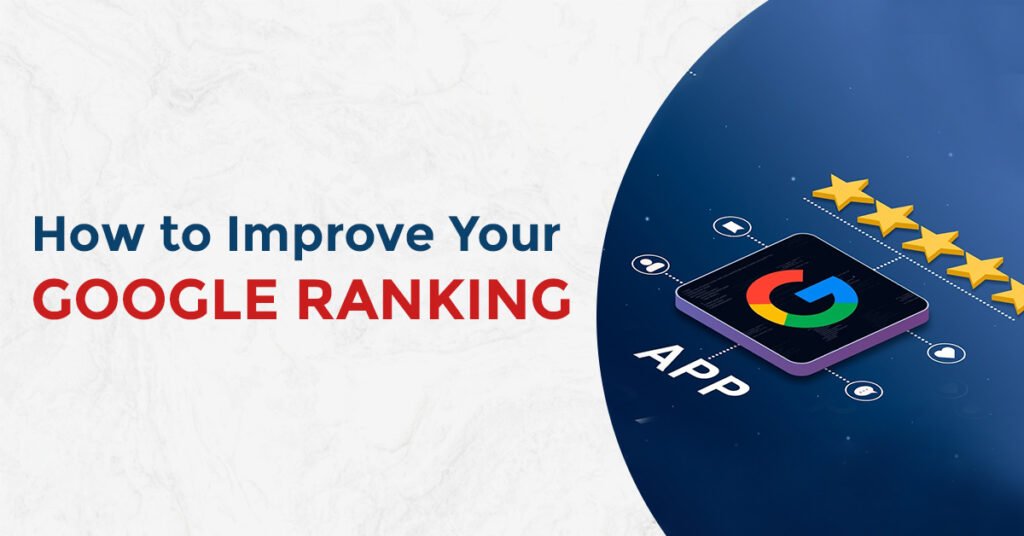
What's Data Entry and Why Do You Need It?
Improving your website’s ranking on Google isn’t just about adding keywords and hoping for the best. It’s about strategy, user experience, and ongoing optimization.
Whether you’re a business owner, blogger, or marketer, this beginner-friendly guide breaks down the essential steps to climb the ranks—without technical jargon.
Whether you’re a business owner, blogger, or marketer, this beginner-friendly guide breaks down the essential steps to climb the ranks—without technical jargon.
Why Google Ranking Matters
Ranking high on Google directly impacts your visibility, traffic, and ultimately your conversions. A study by Backlinks shows that the top result on Google gets 27.6% of all clicks, while the second result gets just 15%. The lower you go, the fewer people click. So if you’re not on Page 1, you’re invisible to most users.
1. Do Smart Keyword Research
Before writing anything, understand what your audience is searching.
Tips:Use free tools like Uber suggest, Google Keyword Planner, or AnswerThePublic.
Target long-tail keywords (e.g., “best SEO tips for small business 2025”) instead of broad ones like “SEO”.
Check out what your competitors rank for using tools like SEMrush or Ahrefs.
Tips:
2. Create Quality, Relevant Content
Google prefers new, informative,and engaging content that answers users’ problems.
Focus On:Breaking up content using headers (H1, H2, H3), bullet points, and short paragraphs.
Adding FAQs to target featured snippets.
Using images, infographics, and videos to increase engagement.
Tip: Google’s Helpful Content Update favors sites that authors people—rather than algorithms.
Focus On:
Tip: Google’s Helpful Content Update favors sites that authors people—rather than algorithms.
3. Optimize Your On-Page SEO
The term “on-page SEO” describes the elements of your website that you can manage to raise rankings.
Must-Do Checklist: Include your main keyword in:
The page title
The URL
The first 100 words
At least one subheading (H2 or H3)
Use SEO-friendly URLs (e.g., /SEO-tips-google-ranking)
Add alt text for images with relevant keywords
Internally link to other relevant blog posts and service pages
Must-Do Checklist:
4. Improve Website Speed & Performance
Google prioritizes websites that load fast and work well on all devices.
Optimize By: Compressing images (use tools like Tiny PNG or WebP format)
Making use of Cloudflare or another Content Delivery Network (CDN)
Minimizing CSS and JavaScript files
Ensuring your site is mobile-friendly
The speed and user experience of your website are assessed using Google’s Core Web Vitals, which are important performance indicators.
Optimize By:
The speed and user experience of your website are assessed using Google’s Core Web Vitals, which are important performance indicators.
5. Build High-Quality Backlinks
Backlinks (links from other sites to yours) signal authority and trust to Google.
How to Get Backlinks:
- Write guest posts on industry blogs
- Add your website to regional directories of businesses.
- Boost Local SEO (If Your Company Is Local)
- Reach out to sites where your brand or product is mentioned but not linked
Quality > Quantity: One backlink from a respected domain (like Forbes) is better than 50 from low-quality blogs.
6. Boost Local Search Engine Optimization (If Your Business Is Local)
Local SEO can help you rank highly on Google Maps and in local searches if you cater to a particular area.
Quick Wins:Take control of your Google Business Profile and make it fully optimized.
Add NAP citations (Name, Address, Phone) across trusted directories
Ask customers for Google reviews
Use location-based keywords (e.g., “web design company in Chennai”)
Quick Wins:
7. Use Schema Markup (Structured Data)
Schema helps Google understand your site better and show rich snippets (stars, FAQs, prices, etc.).
For Beginners: Add schema for the following using free tools, such as Google’s Structured Data Markup Helper:Articles
Products
FAQs
Reviews
Local Business info
Even if you’re not the top result, this can increase your click-through rate (CTR).
For Beginners: Add schema for the following using free tools, such as Google’s Structured Data Markup Helper:
8. Track Your SEO Progress
SEO isn’t a one-time fix—it’s ongoing.
Use These Free Tools: Google Search Console: Monitor traffic, indexing problems, and keyword rankings
Google Analytics – Monitor where your traffic comes from and what pages perform best
Ahrefs Webmaster Tools – Track backlinks and technical SEO
Review these weekly to refine your strategy and catch any issues early.
Use These Free Tools:
9. Keep Content Fresh
Google favors updated content, especially in competitive niches.
Action Steps:Update old blog posts with new data and insights
Fix broken links and outdated images
Re-promote older posts that are still relevant
Action Steps:
Conclusion: SEO is a Long-Term Strategy
It takes time, consistency, and a user-first mentality to raise your Google ranking. Put the user experience, excellent content, and clever optimization first. Steer clear of “black hat” tactics and shortcuts—Google’s algorithm is more intelligent than ever.
By following these foundational SEO steps, even beginners can start ranking higher
By following these foundational SEO steps, even beginners can start ranking higher

